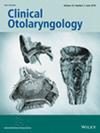Article Retraction in Otolaryngology Journals: A Thirty Year Analysis
Abstract
Objectives
To gain insight into the integrity of research in Otolaryngology-Head & Neck Surgery (OHNS) literature through characterising retracted articles, analysing the reason for their retraction, and the trends in the collected data.
Methods
Pubmed, Embase, and Retraction Watch Database were queried for retracted articles published between the dates of 1/31/92 and 9/30/22. Articles with titles relating to OHNS subjects and published in OHNS journals, as determined by Scimago Journal and Country Ranking, were selected for further analysis. Variables recorded included journal name, journal impact factor, article type, article subspecialty subject, reason for retraction, whether re-published, number of authors, time to retraction, and article citations.
Results
Based on title and article content, 245 articles related to the field of OHNS were identified, of which 68 were published in OHNS journals and analysed for reason of retraction. Of those, 16 (23.5%) were replaced due to erratum concerns (spelling, formatting, etc.) rather than content or data-related issues and were excluded. Among the 52 (76.5%) permanent retractions the most common reasons for retraction include article duplication (n = 26), concerns/issues/errors with data (n = 7), and plagiarism (n = 5). The median time between publication and retraction was 2 years (range, 0–19). The median impact factor was 1.64 (range, 0.08–4.68). The median number of citations per article was 7 (range, 0–86).
Conclusion
Retractions continue to occur in the field of OHNS despite increasing education in ethical publication standards and safeguards. There are, however, improved time intervals to retraction indicating improved surveillance of published articles.

 求助内容:
求助内容: 应助结果提醒方式:
应助结果提醒方式:


